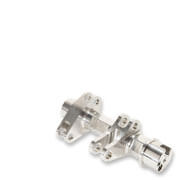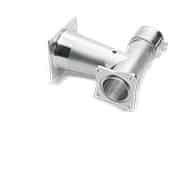
Paperless Engineering
Requirements for the integration of model-based definition in the product life cycle
Philipp Zeilinger, 17.08.2021
The digital product definition through model-based definition enables paperless engineering and can contribute to a more sustainable and efficient future in engineering. In order to take full advantage of this method, several requirements must be met. As a part of a bachelor thesis, the requirements as well as the potential benefits were analysed based on the state-of-the-art technical infrastructure.
For companies, which develop products for the aviation industry, the product development process and the resulting product data are important when it comes to data integrity, efficiency, and competitiveness. In this process, many documents can be created, depending on the product itself, the individual processes and systems of a company, as well as on the complexity and diversity of variants. In addition, the traditional dual product definition through three dimensional models and drawings leads to reproduction of data and complex relationship patterns within the product data management system.
Through the product definition with model-based definition (MBD) the management of product data can be simplified. When this product-defining method is fully integrated, drawings no longer have to be derived from the three-dimensional models, as products are defined through a single three-dimensional data set. (Figure 1) As a result of this single source definition, the amount of data in circulation can be reduced, relationship patterns are simplified, and data integrity is improved. Furthermore, the semantic definition of MBD-Datasets in computer aided design systems can reduce errors in product data, as a standardized and system aided definition of form tolerances, position tolerances and datum systems can be applied. In addition, compatible computer aided systems can process digital product data automatically, which enables reduced process times and ensures fewer typing errors. As a result, the administrative effort, time to market and costs can be reduced.

The advantages seem huge, but what must be done to fully integrate MBD and is the technical infrastructure mature enough to take full advantage of the benefits? In order to answer this questions, different methods such as process modelling with the business process model and notation (BPMN) method, as well as a development analysis with the quality function deployment (QFD) method were applied. On the one hand, to identify the interfaces to processing systems and stakeholders within the product lifecycle, and on the other hand, to analyse the requirements of the data processing stakeholders for the integration of MBD, as well as to define the integration parameters on which should be focussed on.
The analysis showed that different requirements must be met for an appropriate integration of MBD. In order to define products with semantic and machine-readable product manufacturing information (PMI), a suitable computer aided design system must be available. In addition, the processing of the data in the product lifecycle must be enabled for users and systems without creating further data derivatives. Therefore, interfaces and systems must be extended to avoid data duplication. Nevertheless, the necessary data storage in the products lifetime must be ensured, whereby a derivation of the basic MBD data into a neutral data format becomes necessary. In order to maintain data integrity, an automated process that derives a neutral 3D PDF when the MBD data is released in the product lifecycle management (PLM) system is recommended.
Therefore, investments in the computer aided infrastructure, as well as in a PLM-System are necessary to enable the processing of MBD data in the whole product lifecycle and to ensure data integrity. Furthermore, the analysis showed that computer aided systems and stakeholders can read the MBD data if interfaces are extended. Unfortunately, they are not able to process data automatically, because the software infrastructure, such as computer aided manufacturing, computer aided quality and coordinate measuring machine systems are not yet able to process the data adequately. In conclusion, the integration of MBD is technically possible. However, the strategic and monetary benefits have to be analysed in detail and computer aided systems must be further developed in order to take full advantages of the benefits of MBD in the future.







